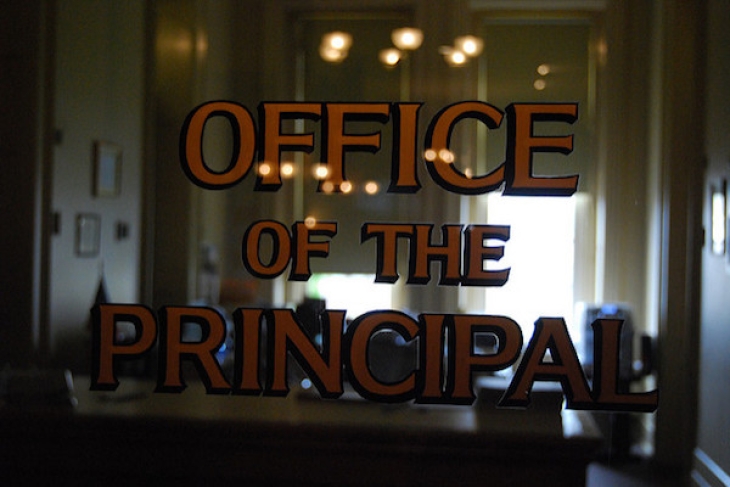Over the past thirty years, the school discipline pendulum has swung wildly from one extreme to the other, as policymakers have struggled to solve an inherently difficult problem. Today, the “zero tolerance” policies that were all the rage at the end of the last century are generally viewed as heavy-handed and blunt, removing administrator discretion and treating many different kinds of offenses as equally injurious. Yet as the tide of elite—and education reform—opinion has turned against over-suspension, the instinctive response of policymakers has once again been to tie the hands of teachers, principals, and local officials, this time with the explicit goal of reducing the use of suspensions, especially for traditionally disadvantaged groups.
Overall, we agree that suspensions are unlikely to benefit suspended students. But an important question about school discipline is also whether the push to reduce the number of suspensions is harmful to the rule-abiding majority. According to a 2004 study, 85 percent of teachers and 73 percent of parents felt the “school experience of most students suffers at the expense of a few chronic offenders.” And that was before the push to reduce suspensions. A more recent study by the Manhattan Institute’s Max Eden showed that the percentages of students and teachers in New York City reporting drug use, gang activity, and physical fights rose dramatically in the years following discipline reforms initiated by Mayor Bill de Blasio, which require that principals obtain written approval from the city before suspending a student for “uncooperative/noncompliant” or “disorderly” behavior.
To examine these matters further, we enlisted Matthew Steinberg, assistant professor of education at the University of Pennsylvania, and Johanna Lacoe, an experienced researcher at Mathematica, to conduct Fordham’s new study, The Academic and Behavioral Consequences of Discipline Policy Reform: Evidence from Philadelphia. In it, they examine outcomes in the School District of Philadelphia (SDP), which changed its code of conduct in the 2012–2013 school year to ban out-of-school suspensions (OSS) for low-level “conduct” offenses—such as profanity or failure to follow classroom rules—and reduce the length of OSS for more serious infractions.
Below is a summary of what they found:
- Changes in district policy had no long-term impact on the number of low-level “conduct” suspensions, and most schools did not comply with the ban on such suspensions.
- Changes in district policy were associated with improved attendance—but not improved achievement—for previously suspended students.
- “Never-suspended” peers (i.e., students who didn’t receive a suspension in any of the years considered by the study) experienced worse outcomes in the most economically and academically disadvantaged schools, which were also the schools that did not (or could not) comply with the ban on conduct suspensions.
- Revising the district’s code of conduct was associated with an increase in racial disproportionality at the district level.
Based on these findings, we draw three conclusions:
First, schools may respond very differently to district mandates, depending on their demographics, achievement levels, and prior suspension rates, as well as other factors bearing on policy implementation and compliance. In Philadelphia, the “toughest” schools tended to ignore the district’s ban on conduct suspensions, while the highest-achieving schools appeared unaffected—because they didn’t have any conduct suspensions to begin with. Finally, the schools in the middle stayed lukewarm, meaning they reduced their suspensions but (in most cases) didn’t eliminate them entirely. In other words, schools responded (or didn’t) much as you might expect them to, given their pre-existing challenges.
Second, top-down mandates can have unintended consequences—even when they emanate from local decision makers rather than distant state or federal governments. In Philadelphia, never-suspended students in many schools, including most schools that reduced their suspension rates, experienced a decline in academic performance relative to the most plausible comparison group. And the district-wide decline in conduct suspensions coincided with a suspicious increase in the number of minority students suspended for more serious infractions (though it is impossible to know if less serious offenses were reclassified as a result of the policy change). Clearly, these are not the responses that district leaders intended.
Third, policymakers should respect the wisdom of practitioners when it comes to school discipline. For us, the biggest lesson from Philadelphia’s experience is that “discipline reform”—however defined or conceptualized—is best initiated at the school level rather than the district level, where the law of unintended consequences is more apt to prevail. Suspensions may have costs for suspended students, but these must be balanced against the necessity of maintaining an orderly learning environment. And the individuals best positioned to make those judgment calls, and to gauge how effective future approaches to discipline may be, are those on the front lines. Teachers and administrators who are struggling to manage disorder cannot be expected to comply willingly or well with a directive that eliminates one of their most important tools.
Overall, the report’s findings speak to the stubborn realities that educators must contend with, which brings us to our final point: a plea for the removal of the rose-colored glasses that so many observers and critics seem to don when viewing school discipline. Everyone knows that changing a district’s policy on suspensions is unlikely to address the underlying issues in tough schools—or peaceful ones. So viewing this as a civil rights issue and trying to fix it with top-down decrees is impractical and potentially harmful, whether those decrees emanate from the district, the state, or the banks of the Potomac. If the goal is finding more effective ways to build a safe and strong school culture, it is far better to work with staff in high-poverty schools than to imply that they have racist tendencies and may be deliberately violating students' civil rights.
We harbor no illusions that this study will put an end to the discipline debate. But we hope it will inject a measure of nuance into the conversation—and perhaps help the discipline policy pendulum to find a more stable resting place somewhere in the vast and sensible middle ground.


